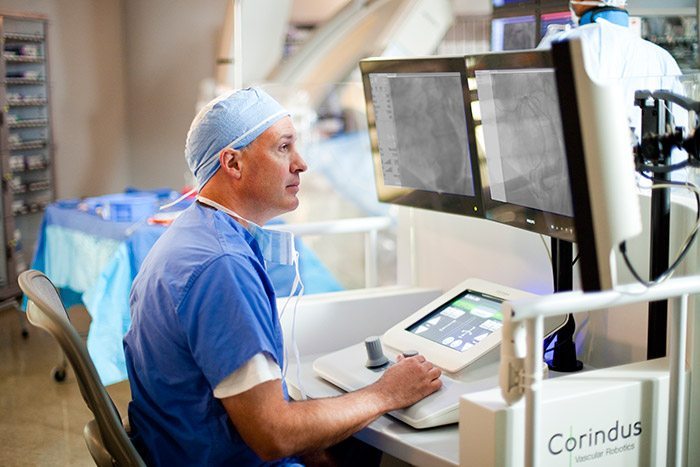In 2011, the Society of Cardiovascular Angiography and Interventions published new guidelines for a Radiation Safety Program for the Cardiac Catheterization Laboratory.
With regards to procedures, they recommended limiting exposure duration, reducing dosage, limiting high-dose high contrast use, reducing magnification, and increasing distance from the x-ray beam to name a few.
Mayo Clinic reduced doses by 40 percent over a 3-year period in a case study released in 2012, where researchers noted that "the physician's expectations [had to] change from a desire for excellent image quality to a desire for low radiation dose and acceptance of clinically adequate image quality."
Technology itself might not be able to change culture, but it can significantly improve many relevant factors, as demonstrated by trials and testimonials of Corindus's CorPath system.
The 2013 PRECISE trial that evaluated the safety and clinical effectiveness of robotic-assisted percutaneous coronary intervention using the CorPath 200 system in 164 patients resulted in a 40 percent reduction in contrast and a 95 percent reduction in radiation exposure for the primary operator---the physician.
But what about non-physician Cath Lab personnel?
Dr. Joseph Carrozza of Steward Medical Group wrote about trails of CorPath robotic-assisted PCI in Cath Lab Digest, summarizing, "The results of both trials showed that overall procedure time, radiation dosage, contrast media usage, and radiation exposure to the second operator (cath lab technologist or fellow) compared favorably with the historical data."
Carrozza also discussed the learning-curve of the CorPath system, which physicians have testified to be relatively easy to use. "The first three patients of every investigator in the PRECISE trail were considered as 'roll-ins,'" writes Carrozza. "When procedural characteristics of roll-in cases were compared with the rest of the patients in the trial, a gradual improvement in the total procedure time (51.1±25.5 vs. 42.3±16.4 min) and x-ray time (12.8±7.9 vs. 10.2±4.8 min) was noted as part of a learning curve that leveled off after the 'roll-in' patients." That's a quick learning curve.
And compared with historical data, where mean fluoroscopy time was 18.3±12.2 min, that's a significant improvement in radiation reduction.
What about imaging and culture? Could the CorPath system increase physician satisfaction with the image quality of lower radiation doses? It's likely. The operator's "cockpit" places the doctor closer to the monitors for visualization, and the CorPath system's measurements are more precise than highly variable visual estimates of coronary lesion length.
What is your Cath Lab doing to reduce radiation exposure for personnel? Do you need new technology? The Cath Lab of the Future should optimize patient outcomes AND guarantee staff safety.
IN THE NEWS: CorPath Robotic-Assisted Peripheral Vascular Intervention Trail Enrolls First Patient.
Continue to advocate and educate about reducing radiation exposure in the Cath Lab. Share this post with the buttons below!
Special Report Series
Part One: Non-Physician Cath Lab Personnel Report More Work-Related Pain
Part Two: Advocating and Educating about Work-Related Pain in the Cath Lab
Part Three: Mitigating Work-Related Musculoskeletal Pain
